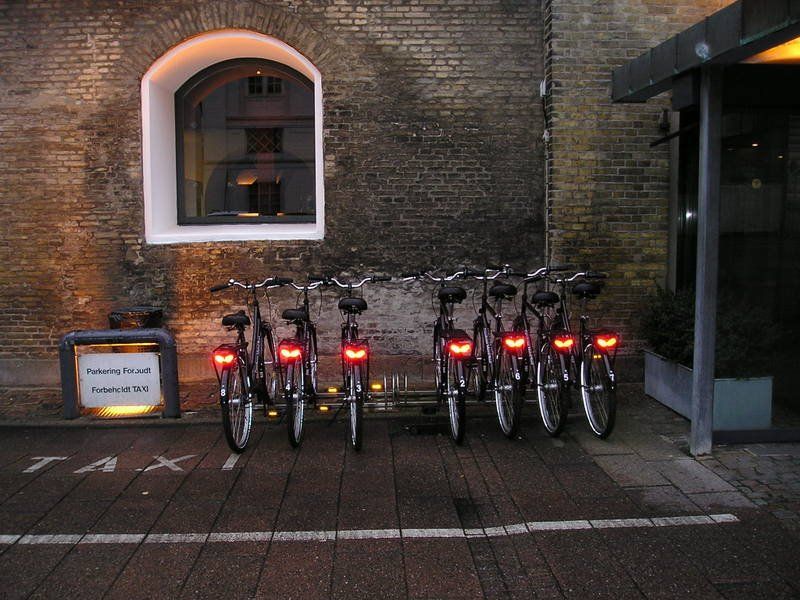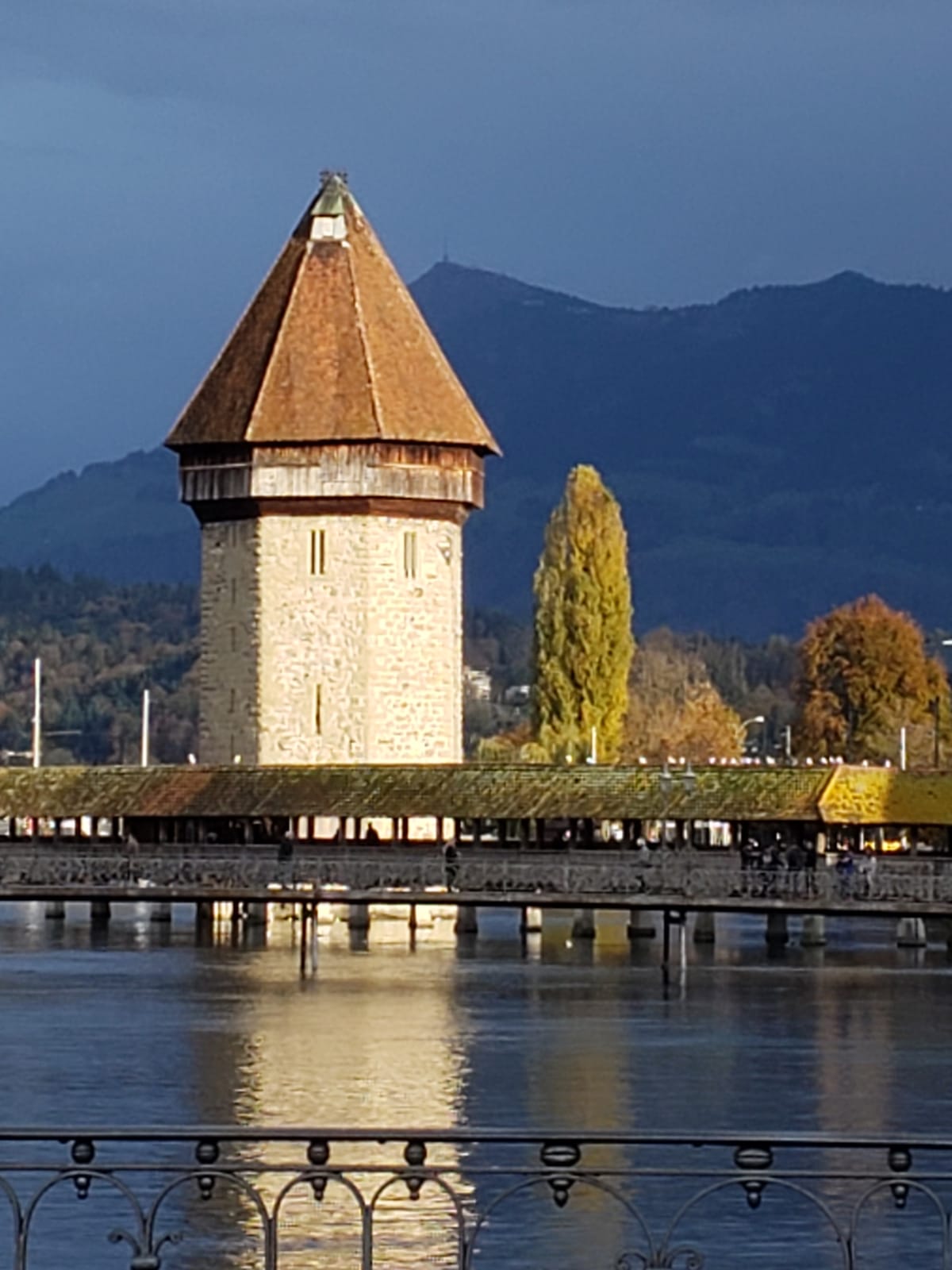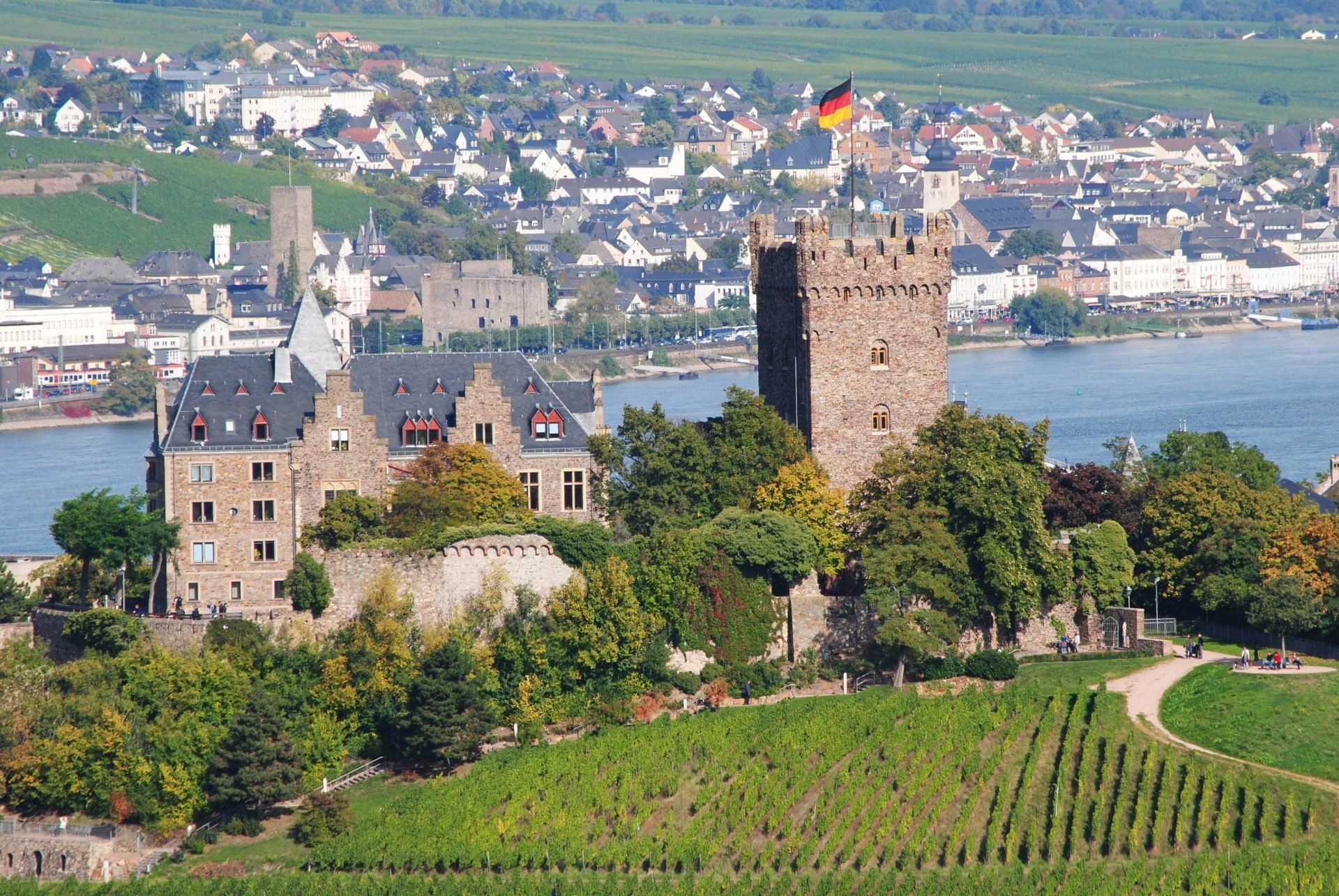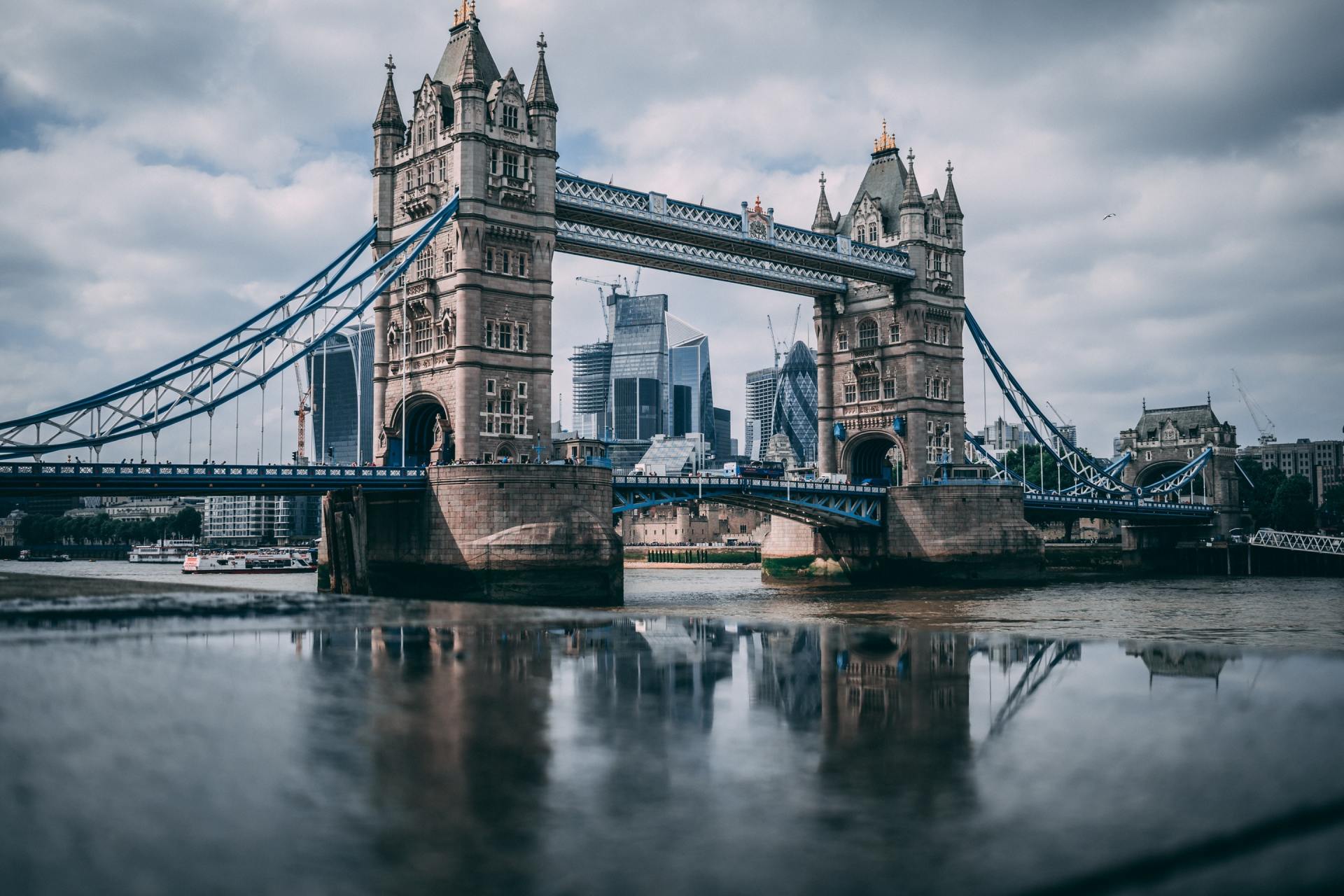Critics Choice Vacations
Copenhagen, Denmark

Copenhagen Admiral Hotel is housed in a more than 200-year-old grain-drying warehouse from 1787. For centuries, this building and location on the waterfront have been at the epicenter of amazing events.
**Photo above is the bike parking area at the Copenhagen Admiral Hotel**
The grain-drying warehouse, built by the merchant company Pingel, Meyer, Prætorius & Co, has been historically preserved. The warehouse is built from the finest raw materials, and in all its architectural splendor stands as an eloquent testimonial to the prosperous trading period of the 1780s. The building’s impressive joists are made of pine from the great forests of Pomerania, today northern Germany and Poland.
This was the era of the great sailing ships and a time when the port was bustling with lively activity. The warehouse stands right at the spot that was the heart of all maritime traffic to the rest of Denmark and the world. The two warehouses making up the Admiral Hotel held 30,000 barrels of grain, and a grain-drying oven was sponsored by the royal family. The midsection joining the two warehouses, which today holds our lifts, etc., was built 100 years after the warehouses, around the end of the 19th century.
Fire became the city’s enemy. In 1728 and 1795, fires ravaged the alleys behind the ramparts. And on 26 February 1794, at 3pm, the monarch’s residency, Christiansborg Castle, was ablaze. The royal family was hastily evacuated, and all citizens lent their assistance in a frantic effort to extinguish the fire with hand-driven pumps and water buckets, which were passed from hand to hand in living chains from the canals.
The fire in Christiansborg Castle brought the warehouse and granary an unexpected neighbor. The royal family stood without a home and, opposite Toldbodgade, four rich families from the aristocracy had asked the famous architect Nicolai Eigtved to design four rococo-style palaces surrounding an octagonal piazza. The autocratic monarch, King Christian VII, acquired all of Amalienborg and moved in.
Copenhagen quickly recovered from the fires. But England felt that the Danish merchant fleet threatened its sovereignty over the world’s seas, and on 2 April 1801, Admiral Lord Nelson made his move. The famous “Battle of Copenhagen” in 1801 took place virtually right outside the warehouse windows, and if someone sought refuge behind its thick walls, he may have witnessed when the one-eyed English admiral, Lord Nelson, who lead the attack against Copenhagen, put his telescope to his blind eye to avoid seeing his superior’s signal to retreat.
On 3 August 1807, an enormous English fleet closed in on Copenhagen, which braced itself for a new siege. The enemy’s artillery, consisting of bombs and rockets never seen before, whistled over the warehouse, leaving the streets flooded with homeless, wounded and dead people among the burning ruins. Many of the wounded were quartered in our lounge, where the old grain-drying oven used to be.
Already when the hotel opened, the project involving the restoration of the old building received a diploma from Europa Nostra, an international organization working to protect Europe’s cultural and natural heritage. Europa Nostra cited as its motivation for giving us the diploma: ‘this is a project that greatly contributes to the protection and enhancement of European architecture”.
With the royal palace on its starboard side and central Copenhagen on its port side, Copenhagen Admiral Hotel stands as a Danish and international flagship, where culture, design and service are alpha and omega. In every way, our guests find themselves nestled between the past and the future.
~~~~~~~
Be sure to stop by the SALT bar while staying at the Copenhagen Admiral Hotel - see more details below.
SALT bar & restaurant is situated in a 1787 listed, former granary warehouse on the Copenhagen waterfront, adjacent to the harbor promenade. Constructed from huge, rough brick walls and a 200-year old Pomeranian pine structure, the buildings original robust character remains intact.
SALT has an impressive á la carte-menu changing four times a year. You can choose a single meal or combine your own menu. Every third week SALT presents a special-made SALT menu. From the SALT menu the guests can choose 2, 3 or 4 courses.
Architecture and concept
SALT restaurant is located in a 200-years-old listed, historical building. Large exposed beams frame the ceiling, interconnecting our times with past times when the building was a warehouse, as far back as the 1780s. The rustic, white-washed walls, big mirrors and simplistic blue and burgundy designer’s furniture all set off the ancient Pomeranian pine beams.
Location
SALT bar & restaurant is situated in central Copenhagen by the waterfront at Admiral Hotel. Its closest neighbors are Amalienborg Palace and the gardens of Amaliehaven. Leading from central Copenhagen to the Little Mermaid, the waterfront promenade starts just outside the restaurant. The restaurant also boasts a view of the new Opera and as of 2007 the new Royal Theatre of Copenhagen.
~~~
Information taken from www.admiralhotel.dk and thanks to JAD for the use of her great photo!

Like so many other parents this Fall, my husband and I became “Empty Nesters”. Our baby girl, and youngest of three was heading off to college and we were faced with the reality of being alone for the first time in 26 years. We decided that this was a life milestone that we should observe, rather than dread. We had spent years devoting endless time and energy to our children and now they were all out in the world as healthy, happy, productive members of society. We had much to celebrate. So, after dropping our daughter off at college we traveled to Montana’s Paradise Valley and spent a few days at Sage Lodge to mark this special occasion. Montana’s Paradise Valley starts near Livingston, which sits on I-90, and stretches south along highway 89 towards Yellowstone National Park. It is the major river valley of the Yellowstone River and is flanked by the Gallatin and Absaroka Ranges. Highway 89 was the original entrance into Yellowstone National Park, although there are now two additional entrances, one each in Montana and Wyoming. Along with its unmatched beauty and world-class fly fishing on the river, the valley also offers other natural wonders such as several natural hot springs.

Ernest Hemingway once described Switzerland as “a small, steep country, much more up and down than sideways, and stuck all over with large brown hotels built on the cuckoo clock style of architecture.” Susan’s recent travels between Geneva and Zurich proves that a lot has changed in the Swiss hotel scene since Hemingway’s observation. While she has lots of experience setting up pre- and post-river cruise activities and private trips in the area, this “self-imposed” familiarization was to acquaint herself with Virtuoso’s Swiss properties. Susan’s excited to share her thoughts on this diverse list of hotels, as well as the historic cities they call home.

This past fall, Susan was invited to sit on the Advisory Board for the German National Tourism Offices out of New York City. In partnership to boost tourism to Germany, she toured two of the country’s most iconic cities. From the eclectic coffee and artistic scenes of Hamburg, to an exploration of the tumultuous history of Berlin, there was a lot to take in. Susan hopes her journey will shed light on why Germany should be the destination of your next European vacation. Below you’ll find some incredible places to stay, cuisine to sample, and experiences that will put the discovery of German culture at the forefront of your travels.

With Paris and Rome, London forms the trifecta of must-visit cities for those first taking the dive into European culture. A hub of history, politics, architecture (both very old and very new), and the arts, London has a little bit to offer everyone. This November, Susan had the opportunity to tour over a dozen of the city’s best boutique hotels so you know where to stay during your visit. In addition, Susan also toured some of the charming villages that surround London that are perfect for a day trip, or quick weekend, to escape the hustle and bustle of the city. She hopes her exploration of this British metropolis will help you know where to start when planning your first (or next) European getaway.

